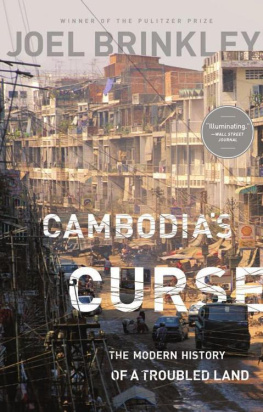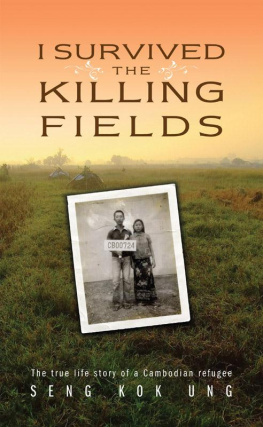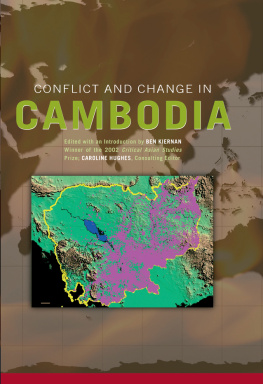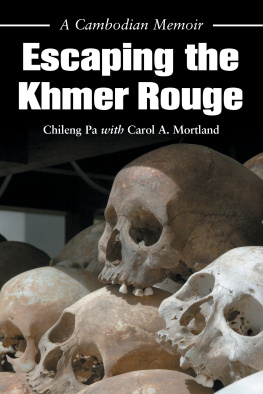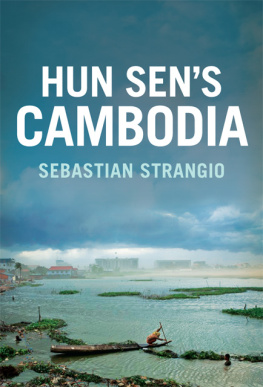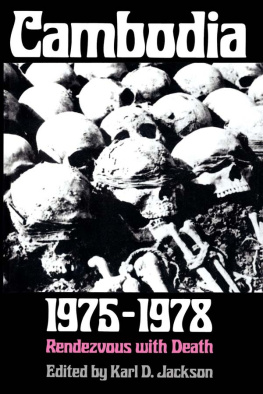Table of Contents
Also by Joel Brinkley:
The Circus Masters Mission (a novel)
Defining Vision: The Battle for the Future of Television
U.S. vs. Microsoft: The Inside Story of the Landmark Case (with Steve Lohr)
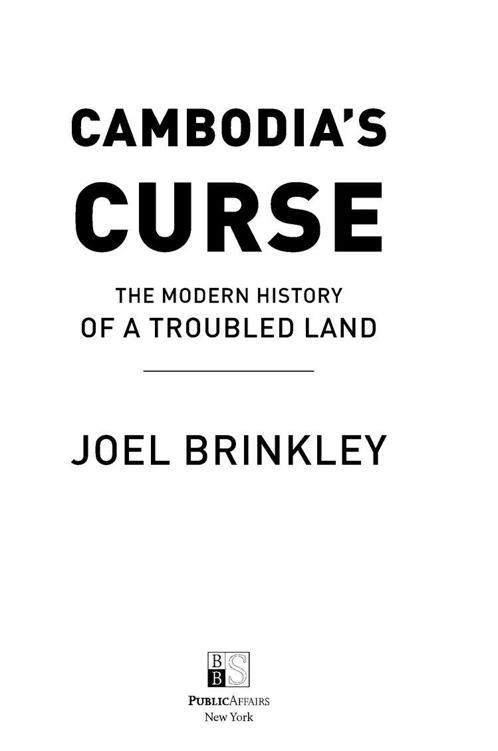
For Charlotte and Veronica
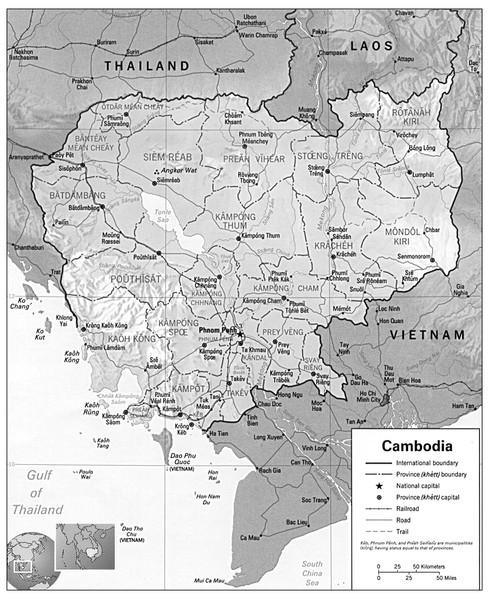
PREFACE
I was twenty-seven years old when I was first sent to Cambodia. At that time, barely four years out of college, I worked for the Louisville Courier-Journal in Kentucky. I was covering the Jefferson County School Board, writing about achievement-test scores and high school yearbook sales. Most recently, Id helped compile the fall school busschedule supplement. The closest Id ever come to international reporting was an overnight trip to Edmonton, Alberta, where I was assigned to write about a shopping mall.
Still, one afternoon my editor, Bill Cox, tapped me on the shoulder and said, Oh, by the way, wed like you to go cover the Vietnamese invasion of Cambodia and the refugee crisis. Oh, by the way, he saidalmost as if he meant: if you dont have anything better to do.
At first I wasnt sure I believed him. After all, Cox was a jokester. While the circus was in town, he had managed to convince the circus masters to truck a full-size buffalo over to the newspaper. Cox brought it up the freight elevator and rode it around the newsroom, waving an oversize cowboy hat. So I did some investigation. It turned out that Jay Mather, a staff photographer, had seen a television clip about a Louisville physician who was working on the Thai-Cambodian border, treating refugees. Mather convinced the photo editor to send a reporter and photographer there to write about this doctor and the larger story.
This was 1979. The Vietnam War had ended just four years earlier, but the convulsions it caused in neighboring states played out for years following. In Cambodia a few months after Saigon fell, Communist insurgents known as the Khmer Rouge overthrew Lon Nol, the military dictator who had been Washingtons man in Phnom Penh.
Today the story of the Khmer Rouge crimes is well known. Two million Cambodians, one-quarter of the nations population, were killed during Pol Pots three and one-half years in power. He willfully destroyed every fixture and totem of twentieth-century life. Eighty percent of Cambodias teachers were killed and 95 percent of the doctors, along with almost everyone else who had an education. Cambodia, as Pol Pot liked to say, was returned to year zero.
But in the autumn of 1979, little of this was known. Rumors of genocide had leaked out, but the regime roundly denied them, and a cottage industry of Khmer Rouge apologists had grown up in the West. Some government officials reported on what was happening, but hardly anyone in the United States wanted to listen. The Vietnam Wars wounds were fresh; the last place Americans wanted to focus attention was Southeast Asia. They were preoccupied with energy crises, intelligence scandals, and, soon enough, the hostages in Iran.
In December 1978 Vietnam had invaded Cambodia and quickly deposed the Khmer Rouge regime. In the months that followed, tens of thousands of refugees stumbled toward Thailand, bringing with them deadly diseases, emaciated bodies, and stories so terrible they were hard to believethe worlds first clear image of the Khmer Rouge horrors. Thats where I was going.
In those days, before the Internet, newspapers were flush with cash, and the Courier-Journal wanted to spend all of its travel money before the end of the budget yearor risk not getting as much the next year. I was delighted to help. So in October 1979 I prepared to leave for Southeast Asia. Mather, the photographer who had come up with the idea, was coming with me.
One afternoon we headed over to the Jefferson County Health Department to get inoculations. An elderly nurse with a gray bun of hair asked us where we were going, and I said, Cambodia.
Cambodia? she asked. Spell it.
So I spelled it, and she rummaged around in a file drawer until finally she pulled out a tattered sheet that looked yellow with age. Looking down at the paper through dirty reading glasses, she read off a litany of deadly infectious diseases, Lets see, youre going to need malaria, cholera, tuberculosis, tetanus, typhoid, diphtheria ...
So I said, Well, well take em all.
The nurse shook her head. No, she insisted, you can only get three diseases at a time. Youve got to pick three diseases.
Which three diseases do you think we should take?
Im sorry, she said shaking her head. I cant pick your diseases for you. Everybodys got to pick their own diseases.
I picked cholera, diphtheria, and tetanus. I came home with typhoid.
Reporting abroad years later, working for the New York Times , I was fortunate to have all the advantages big papers provided for foreign correspondents: drivers, guides, translators, assistants. Jay and I had none of that. We were on our own, and we were naifs.
Journalists then werent easily able to reach Cambodias capital, Phnom Penh. Khmer Rouge fighters were still exchanging fire with the Vietnamese. So Jay and I started in Bangkok, where I had a few interviews, and then we drove to the Cambodian bordera severalhour trip on bad roads traversed by almost as many water buffalo as cars. We stayed at a hotel in Aranyaprathet, on the Cambodian border. Our rooms doors each had a padlock hasp, but it was up to us to buy the locks. Inside, the bed was a straw mat. The sink emptied onto the floor; the water washed around my feet as it wended its way to the drain in the middle of the room.
The first day, we drove to the border. A Thai officer looked at our passports and the permit we had picked up in Bangkok, then gesticulated that we needed something elseapparently a stamp. He motioned us back toward Bangkok. We didnt speak Thai and hadnt any idea what we were supposed to do. Disheartened, we drove back toward Bangkok, but along the way we saw an abandoned American air base. Several cars sat in front of the building closest to the road. Maybe someone there spoke English and could tell us what to do.
Inside, a Thai military officer sat behind a desk. He didnt speak English either, but I showed the permit and gesticulated a question. He took the permits from us, reached into a drawer, pulled out a stamp, and stamped our forms. Jay and I looked at each other and smiled. Serendipity.
We crossed the border and drove on, looking for refugee camps. After a while, we came upon a big truck stacked high with sacks of rice, so we followed it. The driver stopped in front of a crude shelter. Inside lay dozens of sick and dying Cambodians, all wearing the black pajamas that were the communal clothing for everyone in Democratic Kampuchea, the perverse name of the Khmer Rouge state. Just beyond it lay a vast refugee camp. It stretched to the horizon. We spent the day there and found several other camps in the following days. Heres what I wrote:
Gaunt, glassy-eyed and possessionless, they crouch in the heat, hungry and diseased. They stoop over small, dry plots of rock-hard soil. And they wait.They wait in tight lines for hours to get todays ration of food from international relief agencies: a bowl of rice gruel, two bananas, a bucket of brown drinking water.They wait for doctors to heal them.Some wait for news of family, though many know their relatives are dead; they remember watching brothers and sisters, parents and children being murdered, or struggling for a last breath before starvation.They wait for another assault by Thai soldiers who come to rape their women. Or for Vietnamese troops to launch an all-out offensive that would drive them across the border into Thailand.And some wait to learn where the next steps in their miserable lives will lead them. Meanwhile, they sweat, swat at mosquitoes and inhale the stench of hundreds of thousands of suffering and dying countrymen.Death and destitution.Seven million Cambodians have been caught between the two since 1975. About 3 million are already dead, and many who remain alive could die soon from disease or starvation.The lucky ones are the million or so Cambodians who escaped the grip of the Communist Khmer Rouge, dodged gunfire from Vietnamese invaders and trekked hundreds of miles with little or no food to sanctuary in refugee camps on the Thai border.But what kind of sanctuary is it?For many its a rectangle of hard, bare ground the size of a desk top.Its a plastic sheet for cover, so low overhead that it rubs the noses of some who sleep.Its the searing odor of sweat, defecation and death. Its the ceaseless buzzing of a million flies and the hack of 10,000 coughs.Its row upon row of blank-faced sufferers whose futures hold no promise or respite.Life in a refugee camp is hellish, unbearable. The relief worker who ends the first day wet-eyed cant always blame the choking dust. But compared with life in Cambodia since 1975, many refugees say their plight doesnt seem so bad.Talk to them.As they tell of years of horror and misery that Westerners can barely comprehend, their faces are expressionless and dull. Their voices go flat, as if theyre talking about a dull day at work. Their tales end with a nodding acknowledgment of the death of their nation and culture.
Next page
